
Love making homemade almond milk but struggle with what to do with leftover almond pulp? You’ve come to the right place!
These easy almond pulp cookies are a delicious and healthy way to use almond pulp, helping you reduce food waste and enjoy a tasty treat.
Rather than being a waste, almond pulp is a fantastic ingredient for cookies: it gives them a delightful nutty flavour and a unique cakey texture due to its moisture.
Our simple and wholesome recipe for almond pulp cookies uses only 3 ingredients: almond pulp, dates and coconut oil. That’s it!
So, the recipe is naturally gluten-free, vegan, and free from refined white sugar, and each almond cookie has only 80 calories.
These almond cookies rely solely on the caramel-like sweetness of dates and contain no flour, thanks to the almond pulp base.
So, next time you make almond milk, don’t throw away the pulp: whip up a batch of these amazing almond cookies in just 30 minutes for a perfect guilt-free treat!
Frequently Asked Questions
What’s almond pulp?
Almond pulp is the almond mass leftover from making almond milk.
It’s basically the ground almonds that remain after homemade almond milk has been strained through a milk bag.
Almond pulp comes from soaked almonds that have been blended with water and filtered. It looks a bit like crumbly pieces of wet almond flour.
Is almond pulp the same as almond meal?
Almond pulp is not the same as almond meal or almond flour.
Almond meal/ flour is made from ground-up whole raw almonds, while the almond pulp is the leftovers from the almond milk-making process.
Compared to almond meal or flour, which has a fine and dry texture, almond pulp is coarser and moister.
Also, almond pulp has fewer fats and a milder flavour than almond meal. That’s because the milk-making process extracts some of the oils found in almonds.
How much almond pulp you need for cookies?
This cookie recipe uses 100 grams (3.5 oz) of almond pulp, which is the amount of almond discard you would normally get from making 1 litre (1 bottle) of almond milk.
Most almond milk recipes use 120g (1 cup) of whole almonds to make 1 litre (4 cups) of milk.
Because you recoup up to 85% of the almonds as almond pulp, you should be left with about 100g (3.5 oz) of almond pulp — enough to make 18 medium-sized cookies.
Of course, depending on your almond milk recipe, you could have more or less almond pulp to use in cookies. So, scale up the ingredients accordingly.
How do you store almond pulp?
If you don’t use almond pulp to make almond cookies right away, you can either refrigerate it for one week or freeze it for two months.
To store almond pulp in the fridge or freezer, place it into an airtight container, sealable glass jar, or ziplock bag.
To prevent moisture build-up and mould growth, pack up the almond pulp into the smallest container or squeeze out any excess air before sealing.
As an alternative to refrigerating or freezing, you can also dehydrate almond pulp in the oven to make your own almond flour.
How do you use almond pulp in cookies?
For cookies, almond pulp should feel like moist almond flour: easy to crumble when rubbed, yet hold together when pinched.
Thoroughly strain the almond milk to make sure the almond pulp is not overly moist, or the cookies will be too chewy.
When using almond pulp in cookies, you need a little extra fat or a wet binder, as some of the almond oils are lost in the milk-making process.
You can add pureed dates, mashed bananas, applesauce, nut butter, a flax egg, or coconut oil to the almond pulp cookie dough.
Are almond pulp cookies crispy or chewy?
Because almond pulp has more moisture and fewer fats than almond flour, it yields chewy, soft cookies that are almost cakey.
For crispier almond pulp cookies, you need to use white sugar (not as healthy as using dates, though), or you can add chopped toasted nuts to the dough for extra crunch.
Are almond pulp cookies healthy?
Almond pulp cookies are a healthier option than traditional butter cookies as almonds are a whole food rich in fibre and healthy fats.
Using almond pulp in cookies also lets you cut back on refined white flour, making the recipe gluten-free.
Almond pulp cookies can even be healthier if you replace white sugar with a natural sweetener like dates or bananas, as in this recipe.
Still, keep in mind that almond pulp cookies are calorie-dense. So, moderation is key. Enjoy 2-3 of these cookies as an occasional treat!
Ingredients
| Almond Pulp | 100 g |
| Pitted Dates | 120 g |
| Coconut Oil (at room temperature) | 60 g |
| Baking Powder | 1/2 tsp |
| Salt | 2 pinch |
Step 1
Use the almond pulp leftover from making almond milk. For more flavour, it’s best to use almond pulp from roasted almonds.
Make sure the almond pulp has as little moisture as possible. It should be easy to crumble when rubbed yet hold together when pinched.
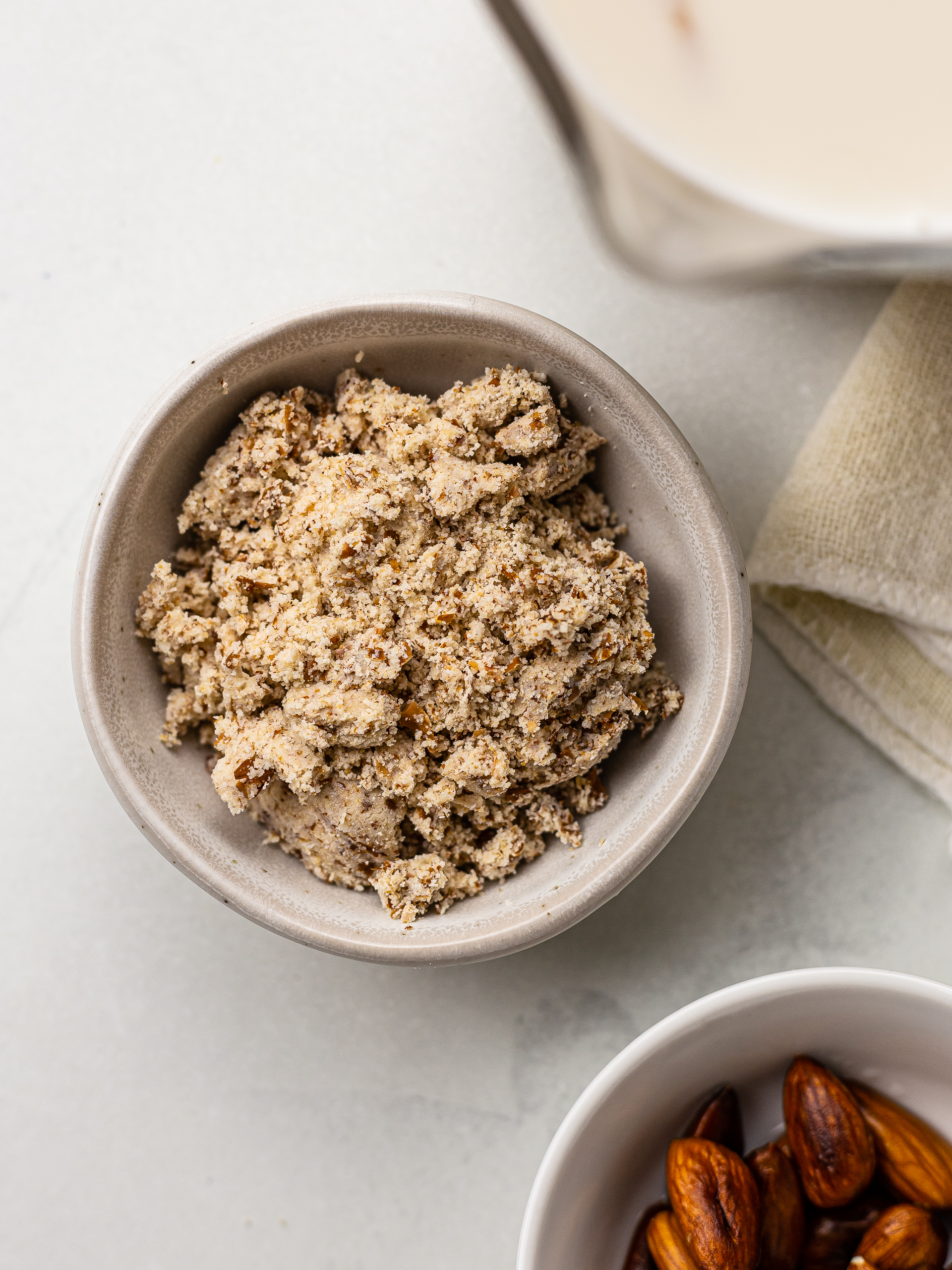
Step 2
Soak the dates in a bowl of hot water for 10-15 minutes to soften, then drain well.
Strain any excess water through a sieve, pressing the dates hard with the back of a spoon.
Mash the dates with a fork or your fingers, or puree them in a food processor.
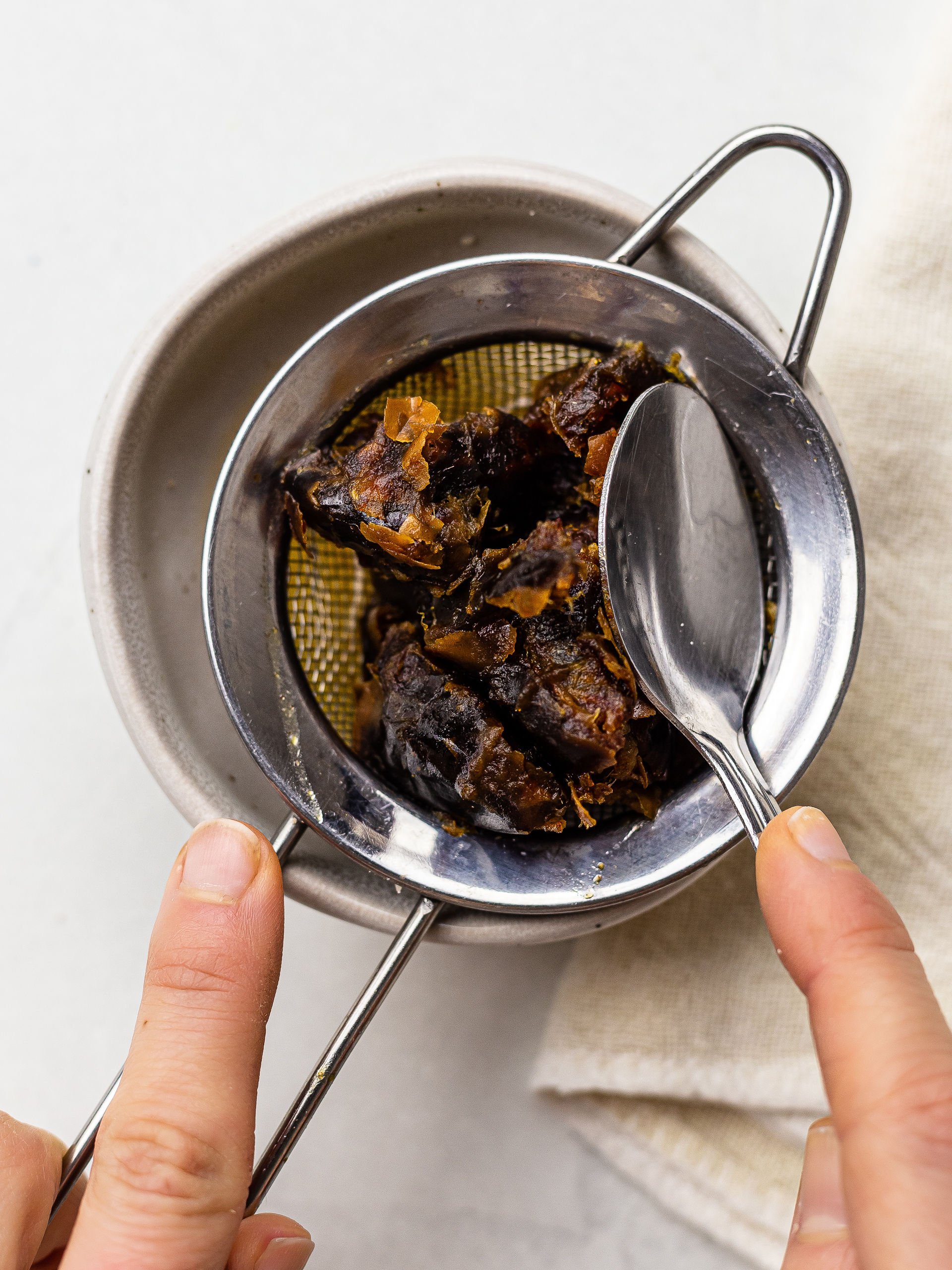
Step 3
In a bowl, mix the almond pulp with baking powder and salt.
Then, add the coconut oil, softened at room temperature, and rub it into the almond pulp with your fingertips.
Add the pureed dates and mix all into a cookie dough.
The cookie dough will be a little soft due to the moisture from the almond pulp.
Cover almond pulp dough with cling film and place it in the fridge for 10-15 minutes to set and harden, so it’ll be easier to shape into cookies.
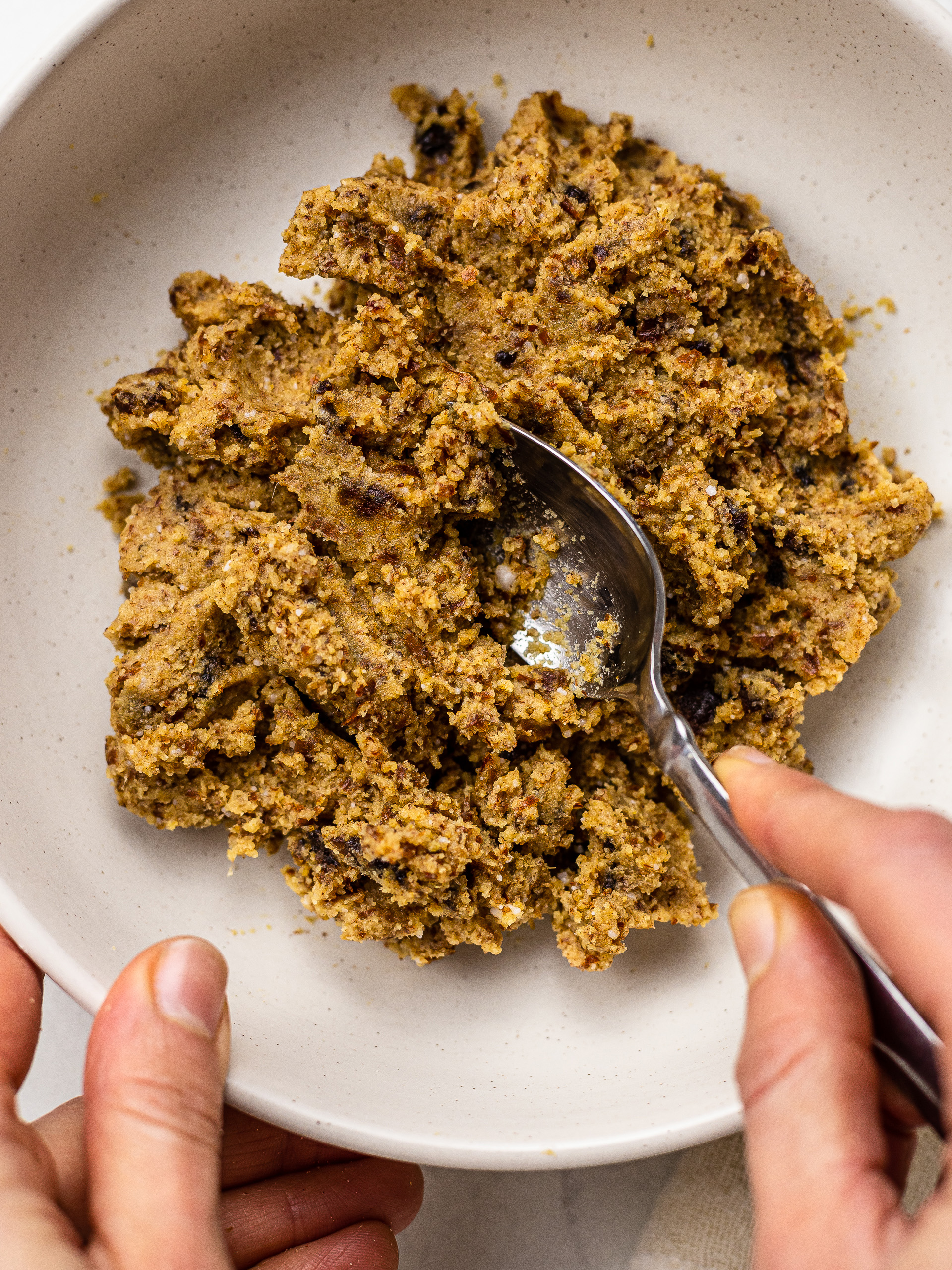
Step 4
Pinch off small portions of cookie dough and roll them into balls roughly the size of a walnut.
Place the balls on a sheet of baking paper, leaving some space between them.
Cover with a second sheet of baking paper and use a rolling pin to roll out the cookie dough balls into thin, flat cookies.
Peel off the baking paper and use a round cookie cutter to cut out neat cookies.
Gather the cookie dough trimmings and use them to make more cookies.
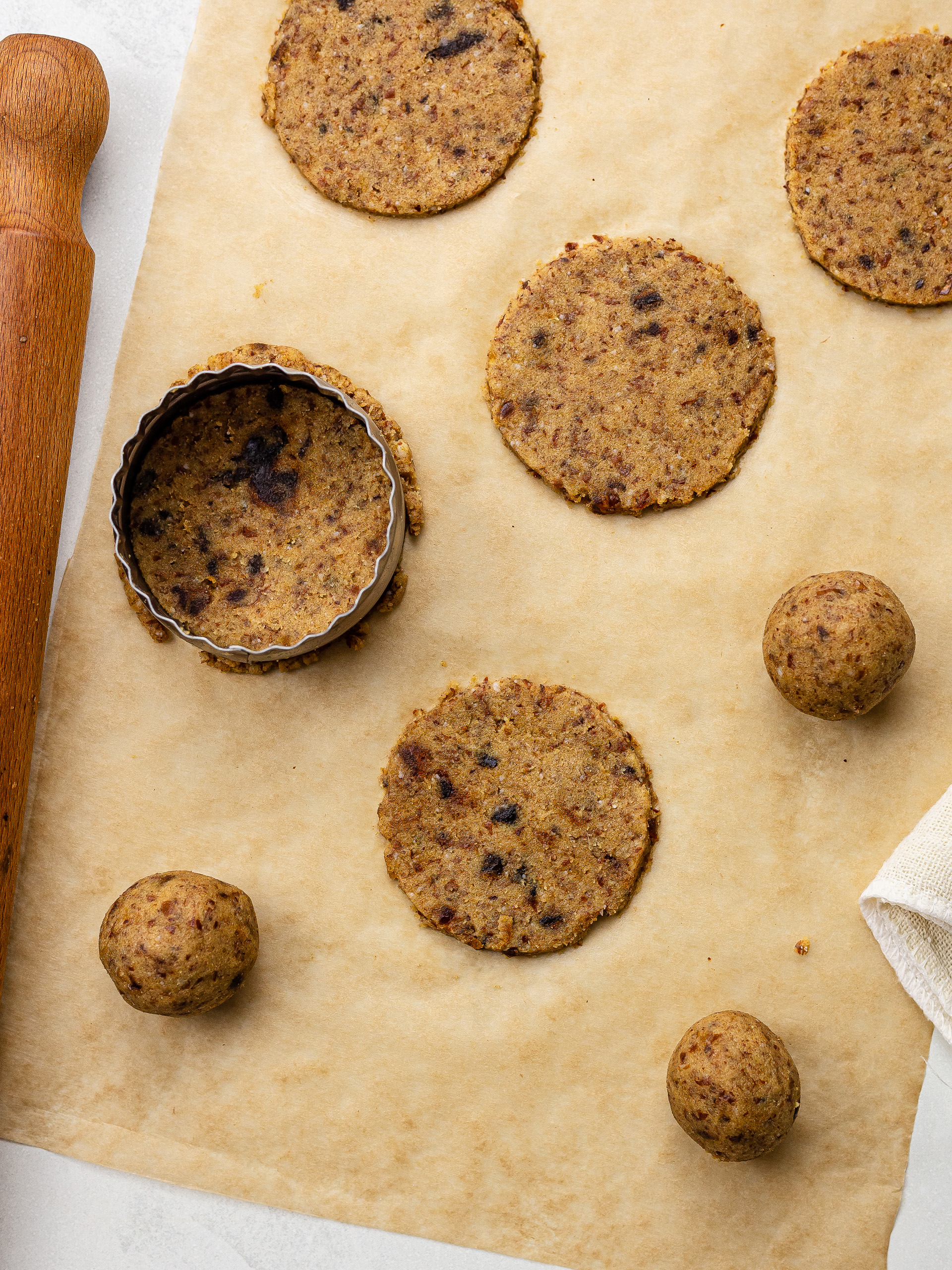
Step 5
Refrigerate the prepared almond cookies while you preheat the oven to 190°C (375°F) static.
Once the oven is hot, bake the cookies for 15-18 minutes or until the edges are lightly golden brown.
Because of the almond pulp, the cookies will be cakey and soft rather than crispy.
Then, let the cookies cool down completely on a cooling rack.
Your healthy almond pulp cookies are ready!
Enjoy them right away or store them wrapped in foil in an air-tight container for 3 days.
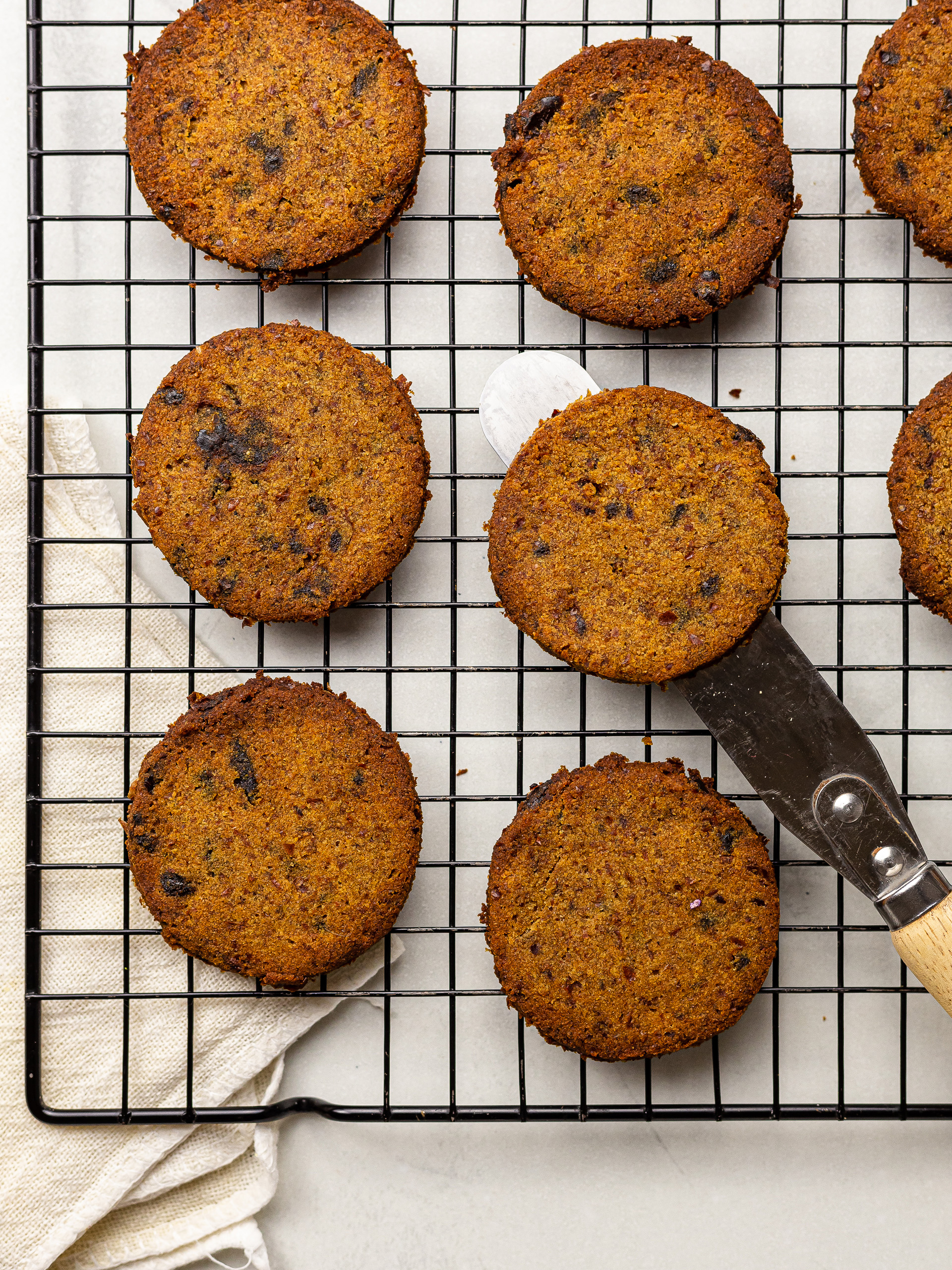
1
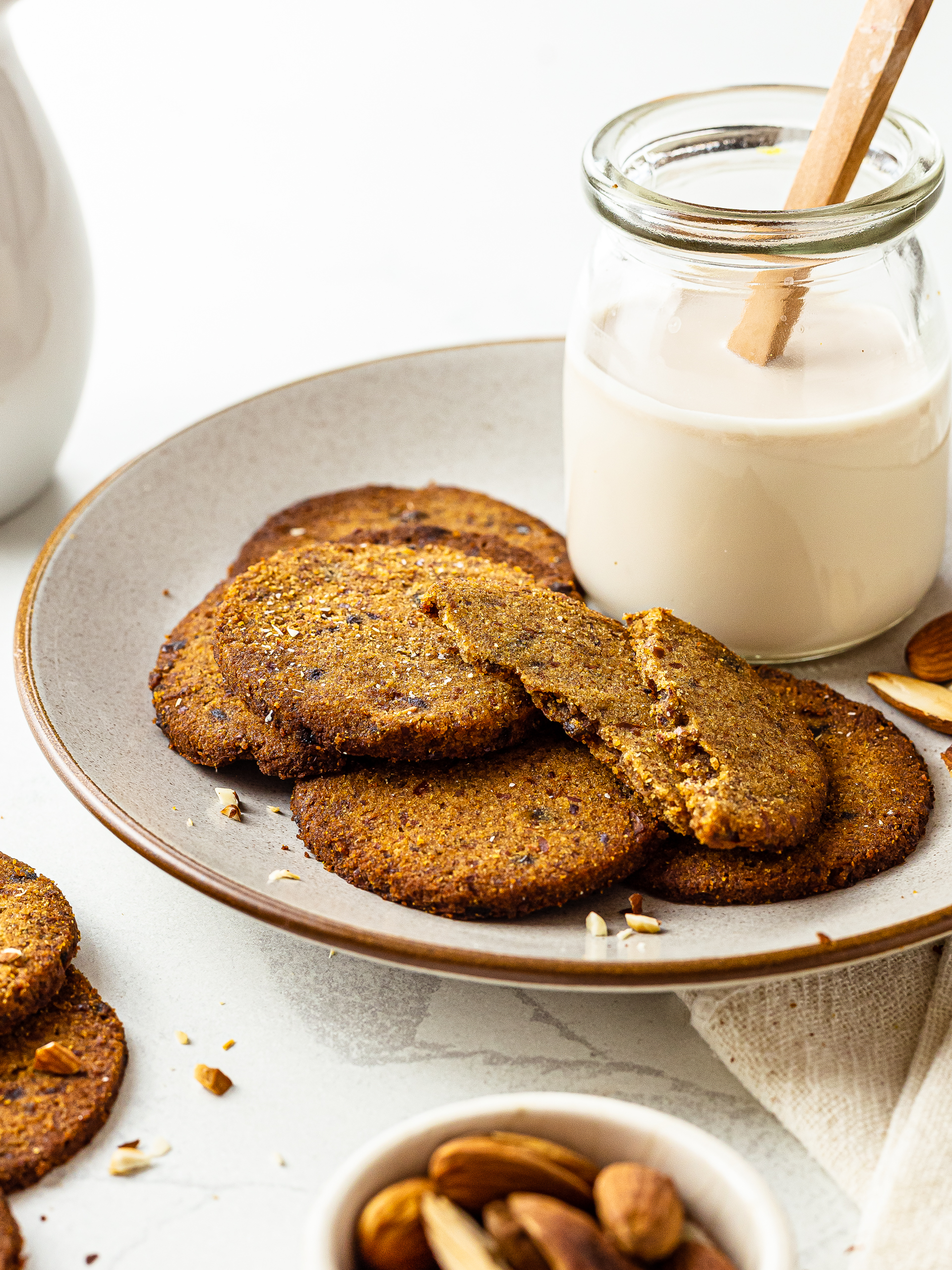
2
Tips
The moisture content of almond pulp can vary depending on how well it was squeezed after making almond milk. So, if the cookie dough seems too dry, add a bit more coconut oil, or if it is too sticky, add a bit more almond pulp until the dough comes together.
Add-ons
Almond pulp goes really well in cookies with ingredients like dark chocolate chips, cinnamon, and dried fruits such as cranberries, cherries, and raisins.
Like this recipe?
You can use this cookie recipe for other nut or seed pulp recipes, like leftover pumpkin seeds from this homemade pumpkin milk.
Or try our other super healthy cookies like these butternut squash cookies, gluten-free applesauce cookies, hemp seed cookies, or chocolate chip cauliflower cookies!
Discover more from reviewer4you.com
Subscribe to get the latest posts to your email.





